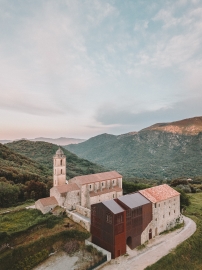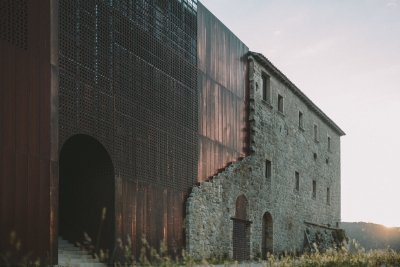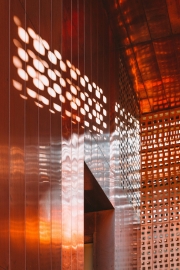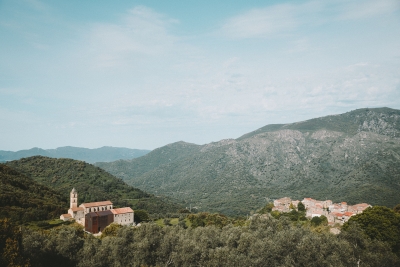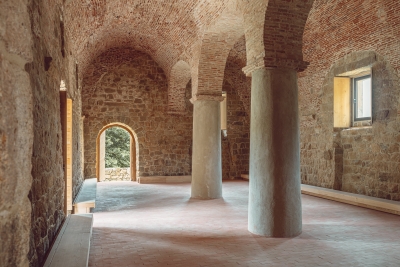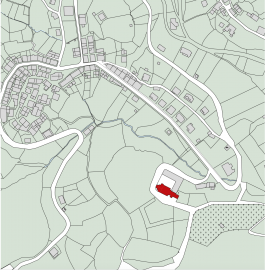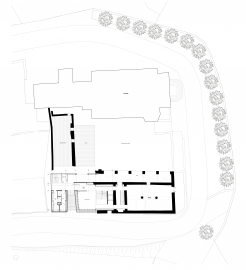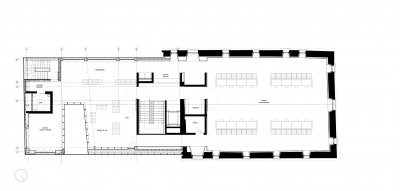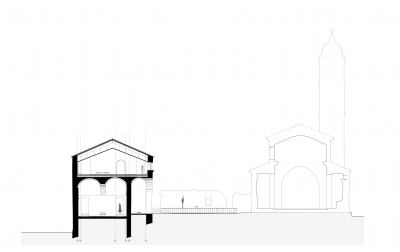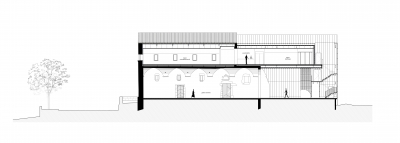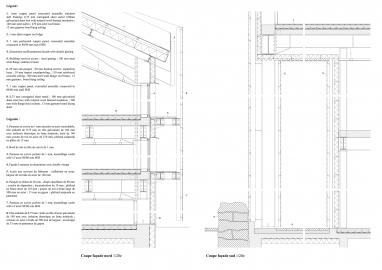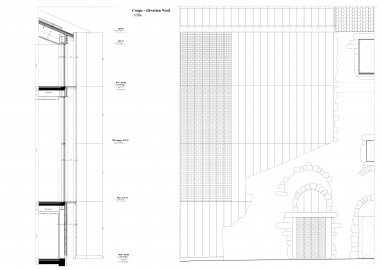Rebirth of the Convent Saint-François
French studio Amelia Tavella Architectes renovated and extended a 15th-century convent on the island of Corsica, adding a perforated copper volume.
Built in 1480, the part-ruined Saint-Francois Convent is positioned on a hill overlooking a village and mountainous landscape.
Amelia Tavella, who has just received the title of Chevalier in the National Order of Merit, is completing the rehabilitation and extension of the Convent Saint-François, in Sainte-Lucie de Tallano, Corsica, her native island.
This building, built in 1480, listed as a historical monument, partially in ruins, was dormant. The young architect had to rebuild it without separating from the vestiges of the past.
« I believe in higher and invisible forces. The Convent Saint-Francois of Sainte-Lucie de Tallano, built in 1480, is part of this belief. Housed in a height, on its promontory, it was a defensive castle before being a place of prayer, of retreat, chosen by monks aware of the absolute beauty of the site. Faith rallies to the sublime. »
« I believe in higher and invisible forces. The Convent Saint-Francois is part of this belief. Housed in a height, on its promontory, it was a defensive castle before being a place of prayer, of retreat, chosen by monks aware of the absolute beauty of the site. Faith rallies to the sublime. »
With its back to the cemetery, the convent overlooks the village it watches over. An olive grove is like a collar at its feet. Here pulses the heart of Alta Roca.
The beauty there is religious, supernatural
Nature has grown inside the building, Siamese nature slipped between the stones and then transformed into plant armor that protects against erosion and collapse. Amelia has honored this nature that will have long protected the dormant edifice before its resurrection. « I chose to keep the ruins and replace the torn part, the phantom part, in copper work which will become the House of the Territory. I walked in the footsteps of the past, connecting beauty to faith, faith to art, moving minds from before to a form of modernity that never alters or destroys. The ruins are marks, vestiges, imprints, they also tell the foundations and a truth, they were beacons, cardinal points, directing our choices»
I have always built this way on my Corsican island, like an archaeologist who brings together what was and what is and what will happen; I do not remove, I hang, bind, affix, slide, resting on the initial ground, on the original work : the copper reveals the stone, the monument and it sacralizes the ruiniform and poetic state.
Ruin is like an x-ray image of a polished structure undone by time.
She suddenly finds herself magnified, because held by a reversible copper frame, itself doomed to transform, skate, become second skin and have a story.
I liked the idea of a possible return to ruin, that the copper could be undone - this possibility is a courtesy, a respect, to the past, to Corsican heritage.
I built the Maison du Territoire by aligning myself with the original massing. By mimicry, I reproduced the silhouette of the pre-existing building. »

